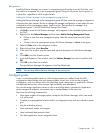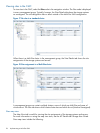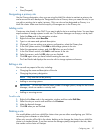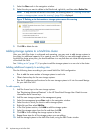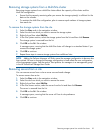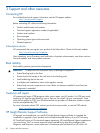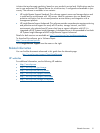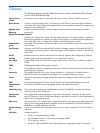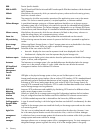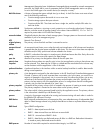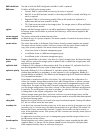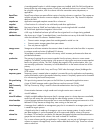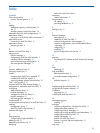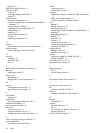RAID rebuild rate The rate at which the RAID configuration rebuilds if a disk is replaced.
RAID status Condition of RAID on the storage system:
• Normal - RAID is synchronized and running. No action is required.
• Rebuild - A new disk has been inserted in a drive bay and RAID is currently rebuilding. No
action is required.
• Degraded - RAID is not functioning properly. Either a disk needs to be replaced or a
replacement disk has been inserted in a drive.
• Off - Data cannot be stored on the storage system. The storage system is offline and flashes
red in the network window.
register Register individual storage systems to use add-on applications. Registration requires sending in
the storage system serial numbers to purchase the license keys, which are then applied to the
storage system.
remote copy pair The primary volume and its related remote volume.
remote snapshot An identical copy of a primary snapshot. The remote snapshot is located on the same cluster as
the remote volume.
remote volume The volume that resides in the Remote Copy location where the remote snapshots are created.
The remote volume contains no data. It acts as a pointer to tell the system where to make the
copy of the primary snapshot. The remote volume can be stored in these ways:
• In the same cluster in the same management group
• In a different cluster in a different management group
• In a different cluster in the same management group
Repair storage
system
Creates a placeholder in the cluster, in the form of a “ghost” storage system, that keeps the cluster
intact while you remove the storage system to replace a disk or replace the storage system itself,
and return it to the cluster.
replication level In Release 8.5 this changes to data protection level. Prior to release 8.5, replication level is the
term that designated how many copies of data to keep in the cluster.
replication priority Removed in Release 8.5. Prior to Release 8.5, replication priority allowed you to designate
whether data availability or redundancy is more important in your configuration. Release 8.5
forward defaults to availability. This default can be changed using the HP StoreVirtual LeftHand
OS Command Line Interface.
restripe Striped data is stored across all disks in the cluster. You might change the configuration of a
volume, for example, change data protection level, add a storage system, or remove a storage
system. Because of your change, the pages in the volume must be reorganized across the new
configuration. The system can keep track of several configuration changes at once. This means
you can change configurations, even while a volume is in the midst of a different reconfiguration.
In particular, if a reconfiguration was done by accident, you don't have to wait until it finishes
to change back to the original configuration. See “Stripe”.
resync When a storage system goes down, and writes continue to a second storage system, and the
original store comes back up, the original storage system needs to recoup the exact data captured
by the second storage system.
rolling back Replaces the original volume with a read/write copy of a selected snapshot. Starting with release
8.0, the new volume retains the same name.
secondary site A site that is less important than the primary site. In this setup a minority of managers runs in the
secondary site. In a two-site setup, this allows the secondary site to go offline if the network link
between the Primary and secondary sites fails. Typically, the secondary site has a minority, or
none, of the application servers. If the primary site fails, customers can manually recover quorum
in the secondary site.
server An application server that you set up in a management group and then assign volumes to it to
provide access to those volumes.
shared snapshot Shared snapshots occur when a clone point is created from a newer snapshot that has older
snapshots below it in the tree. All the volumes created from the clone point will display these
older snapshots that they share, as well as the clone point.
36 Glossary



